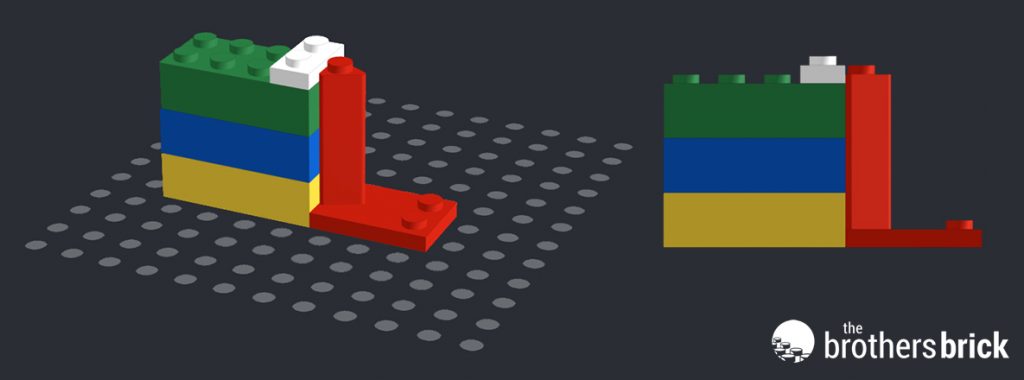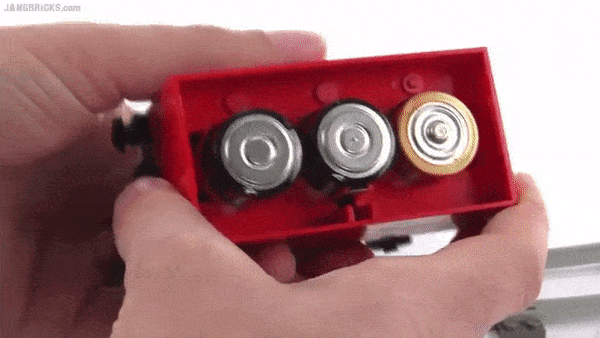LEGO Train-heads, yes, you’re probably beaming ear-to-ear with pride that you are well aware and know the use of this particular piece. For the rest of you who’s wondering, it’s not too late to extend this little mystery a little longer, take a guess on HOW exactly it’s used in train sets? Still pondering and wondering? Let’s cut to the chase, you’re here to get answers. Read right on to find out.
This strange and unique element, according to Bricklink, has a part number of 3218, and was a feature element of Train sets from 1968 to 1987, just shy a year of a couple of decades on the production lines. It appears spanning across 19 years and appearing in 9 particular sets and 4 parts kit in two colours (red and white). It’s a single-use part as it’s not featured in any other form of connection. I stumbled upon this piece in a LEGO-related forum on Facebook highlighted by Krista L Johnson, naming this as her favourite unique part.
The part is named as a “Train Direction Switch – 4.5V 2 x 3” and that probably gives you a hint, but still not the full picture how it actually functions. Above and below are renders of the part from Stud.io, Bricklink’s LEGO digital tool for creating models virtually. LEGO parts come and go and this is one that certainly stands out unique for its triangular-shaped bar with a single stud on top on a 2×3 plate with 2 studs exposed. We’ll leave the in-depth analysis to our friends at New Elementary perhaps, but will leave the visuals below to give you a sense of size and height.
The search for answers
My first instinct was to figure out how it’s used in the set by looking at the instructions and where it’s used in a build. I picked the last set it was featured in, The LEGO 7722 Battery Train Set (Steam Cargo Train).
Once I hunted down the instructions, and I stared at this for a bit and me being a train blockhead, still could not figure what the arrows meant.
Taking a closer look at the carriage didn’t quite help understand it better either.
So how does it work?
We’re fortunate that this set had an excellent video review by Jangbricks and where we’ll use our reference to show you how it’s actually used in play. This is extracted the part of the video that showcases where exactly the element is placed and secured at the side of the tracks. Keep your eyes focussed on the centre of the video and when the trigger from the red cargo train switch slams into the post and switches the direction of the powered train.
What actually happens is a neat little trick inside of the cargo carriage, which is also the battery box. It houses regular battery cells and has a three-way switch that changes the current flow, which triggers the train to move in the opposite direction.
So there you have it, mystery solved. Something so simple yet so cleverly executed. Whether it’s a useful piece that could have been used for other purposes in an official set is debatable. We’ve seen endless iterations of single-use parts that have been creatively repurposed by the custom build community every other day on The Brothers Brick, and that’s what we love about LEGO.
In the slightly misquoted words of Dr. Ian Malcolm, “Bricks, Uh, Finds a Way” . Are there any creative builders reading up for the challenge? We look forward to seeing this element being used! If it’s a great build that deserve a TBB-worthy highlight, we’ll make sure to call it out!
This article couldn’t have been completed without visuals from the excellent review of the LEGO 7722 Battery Train by Jangbricks and instruction scans from World of Bricks. If you haven’t already seen the review, don’t miss it. The only warning I can give is to hold your wallets tight, you may just open up floodgates to nostalgia and overspend!









Makes perfect sense once you see it in action. With the repetitive impact it has to take, there’s not really a good brick-built solution that would do the same job in the same place without being big and ugly. Especially not with the building techniques of that era.
I loved that set as a kid. Damn I am old.
Am I wrong in thinking that just, like, a stack of bricks would accomplish the same thing? Weird.
Benjamin, if you watch the video of the piece in use, the switch on the train hits it with a decent amount of force. A simple stack of bricks might take such an impact a few times, but if you have the train running back and forth for very long it will eventually fail. You might strengthen it with a technic axle running down the middle of the stack, but LEGO designers weren’t doing a lot of that back then.